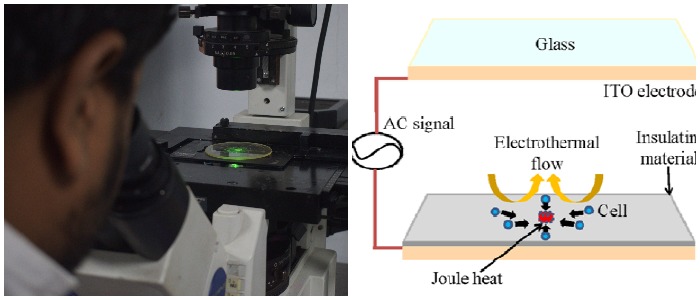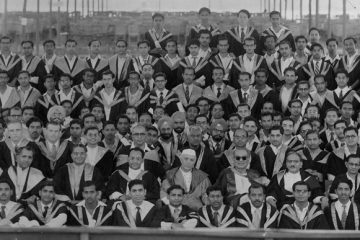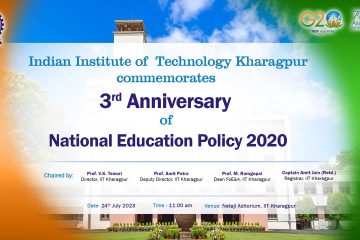IIT Kharagpur Researchers Develop Energy Efficient Technological Process for Biological Cell Research

Economic Times Energy World Deccan Herald NDTV India Today Business Standard Yahoo News Rediff Real Time
IIT Kharagpur researchers have developed a novel energy-efficient method for patterning biological cells by using the heat generated in closed electrical fields. The innovation and the work which could be carried out by using this technology will support a wide range of applications in clinical and biological research.
Cell patterning is crucial for fundamental R&D in cellular biology and also for developing applications related to tissue engineering, neuron network formation, protein patterning, designing of a cell-based biosensor, bio-printing, drug development and many more. The current technologies employed by scientists to pattern a group of biological cells in laboratories remain energy-intensive, even while using miniaturized systems for the same.
The Microfluidics research group of IIT Kharagpur, led by Prof. Suman Chakraborty, has now made a breakthrough in this area. “We have effectively innovated a unique patterning of electrodes on a glass plate. In this way, induced heating due to current flow on the chip, by itself, generates fluid motion. The process, thus, eliminates any external energy source,” remarked Prof. Chakraborty.
Prof. Chakraborty collaborated with fellow researchers Prof. Ananadaroop Bhattacharya, an expert in Thermal Engineering and Prof. Tapas Kumar Maiti, an expert in Biotechnology, along with doctoral students Golak Kunti and Tarun Agarwal.
“We have exploited the inter-connection of the electric field and temperature. The chip design creates a localized variation in electrical properties which in turn, triggers a favourable electrical force. This guides cell patterning and concentration,” said Prof. Anandaroop Bhattacharya.
Explaining the process further Prof. Suman Chakraborty added, “We have achieved this feat in a rather simple way, by attaching a thin insulating layer with a drilled narrow hole on a bottom electrode of the chip. A non-uniform electric field develops when the electric field penetrates through the hole. As a consequence, electrically induced heating generates a sharp temperature variation. This, in turn, induces designed variations in electric properties for setting induced charges to fluid motion.”
This pioneering work, which is now available to scientists working in the field of cell patterning, has recently been published in Analytical Chemistry, a flagship Journal of the American Chemical Society. Download Paper
Talking about the probable uses of the technology first author of the paper Golak Kunti said, “Patterning of biological objects is the fundamental premise of probing cell-to-cell interactions, bio-printing, drug development, image-based cell selection etc. In particular, patterning of cells is widely used to design biosensors for cellular cultivation, and for scaffolds to pattern proteins. On-chip arrangements of cell concentration and patterning have recently gained prominence in portable and miniaturized devices, in lieu of traditionally deployed elaborate and laboratory-intensive arrangements. Our new technology offers suitable environments for cell enrichment, screening of the cells, perfused 3D cell culturing, biosensors, cell washing, and exchange of its suspending medium.”
As a demonstration of their strategy, these researchers further characterized the efficacy of the cell trapping process for two different biological entities, namely, Escherichia coli bacteria and yeast cell.
“These results may turn out to be of profound importance towards developing new medical devices for drug discovery, antibiotic resistance assessment and medical diagnostics,” opined Prof. Tapas Kumar Maiti who is further working on biological cell culture related applications.




“We have exploited the inter-connection of the electric field and temperature. Tapas Kumar Maiti who is further working on biological cell culture related applications.